Canada’s current number one artist is Kent Monkman, a half-Indigenous artist from Ontario. He is known for making provocative paintings about the Indigenous experience in Canada. The purpose of Kent Monkman’s work is diverse. Sometimes, it is to remind us of past wrongs, sometimes it is to empower Indigenous peoples. A theme that repeatedly comes up in Monkman’s work is depictions of famous colonial figures and explorers having fictional homosexual encounters with Indigenous peoples. It has become a trademark of his work.
Kent Monkman and Gisele Gordon’s book The Memoirs of Miss Chief Eagletestickle Vol. 1 draws heavily upon Monkman’s fixation with fictional homosexual depictions. His book contains many of these scenes. The Europeans are always in the submissive role, oftentimes they are bound up and tied down – sometimes they are even being raped.
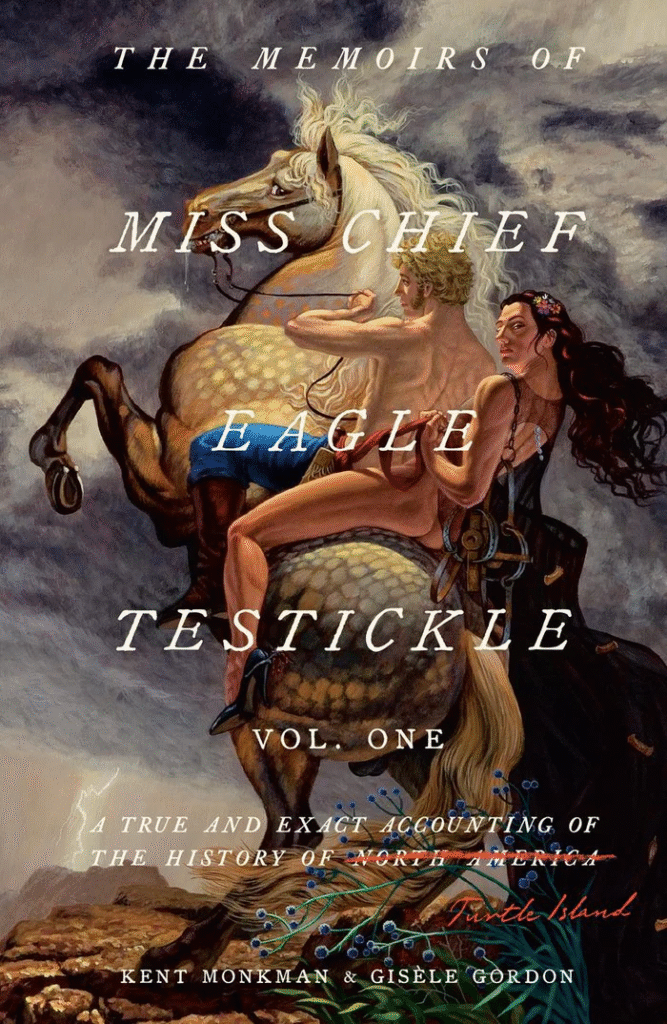
I have come across very few reviews of Monkman’s work that explore why he repeatedly portrays only European historical figures in submissive homosexual relationships with Indigenous men. It is odd to me that there is very little exploration of this theme in Monkman’s work since it is obviously central to his artistic message. In this article I will explore Monkman’s used of graphic sexual imagery in his new book to reveal that Monkman’s purpose is to create a symbolic humiliation ritual that targets pioneer descended Canadians and Americans by humiliating their historical heroes and ancestors.
This article is not about criticizing homosexuality at all. It is only about how Kent Monkman appropriates and uses homosexuality to achieve his goal of subjecting pioneer descended Canadians and Americans to a public symbolic humiliation ritual.
Monkman’s artistic products have become an iconic part of Canada’s official artistic canon. In 2025, he won the Governor General’s Awards in Visual and Media Arts (GGArts). These awards are “the most prestigious distinctions for artistic merit and outstanding contribution to the visual and media arts in Canada”. Artists receive $25,000 and have their portfolios highlighted across Canada. On Air Canada flights, you can watch some of the winners on the little screens by your seat. What a treat!
Monkman was nominated for the award by Naomi Johnson, executive director of imagineNATIVE. Johnson writes that “Kent has inspired generations of artists and challenged larger Canadian conceptions of its history and its relations to Indigenous people… [He has shown the] consistent care, dignity, and respect [emphasis mine] he has for the subject matter he explores but more importantly for the Indigenous people whose stories he is putting forth”.
In a nutshell, Monkman and Gordon’s Miss Chief EagleTestickle Vol. 1 is a book that describes a fictional version of North America’s colonial history where Kent Monkman’s alter ego, Miss Chief Eagle Testickle, is a magical shaman-type figure that travels through time to intervene in the defining historic events of early North America. The narration is built around Monkman’s artwork from over the last twenty years.
The book is equal parts Monkman’s artwork and text. The text was written by Gisele Gordon in collaboration with Monkman. According to Monkman, “Gisele stepped in and crafted these beautiful, very succinct label texts…They were so beautifully written and Gisele really absorbed the messaging from each painting. I think that is really what made that exhibition sing and be so powerful was this writing that brought together so many of the themes. Finding Miss Chief’s voice gave such focus to the project”.
Gisele Gordon labels herself a settler media artist and writer from Toronto. It is obvious from the above quote that Monkman is the driving force behind the book, while Gisele just gives text to his vision, so I will be focusing only on Monkman in this article.
Although the artwork is derivative and rather boring once you get past the shock-value, it is well-printed and vivid. The narrative text is interspersed with words in Plains Cree language. This causes the narration to be very clunky. Plains Cree is a very nice sounding language, but it is poorly used here. Overall, the story feels very thrown together. It reads less like a meaningful narrative and more like someone trying to impose their own view onto a series of historical events while trying to be provocative. The result is maudlin wordplay like this:

“…his eyes were uncannily translucent, like ice, lacking the warmth and depth of the deep brown eyes to which I was accustomed, But unlike the newcomers I had seen in my vision, this one’s nature was sweet, and his ahcahk-iskotew (firewoman-spirit) was bright and clear.” (p. 33)
The narrative in Miss Eagle Testickle Vol. 1 graphically describes at least a dozen fictional homosexual encounters involving European male historical figures. Monkman supplies many paintings where European men are depicted in submissive homosexually provocative poses and sex acts – such as The Raping of Daniel Boone. On one level, it is obvious that there is a revenge dynamic at play. Monkman is saying “This is how you made my people feel, White man – you violated my people. Now in my artwork, I will do the same to you. When you interact with my artwork, you will feel violated too, then you will learn our pain”. Very avant garde.
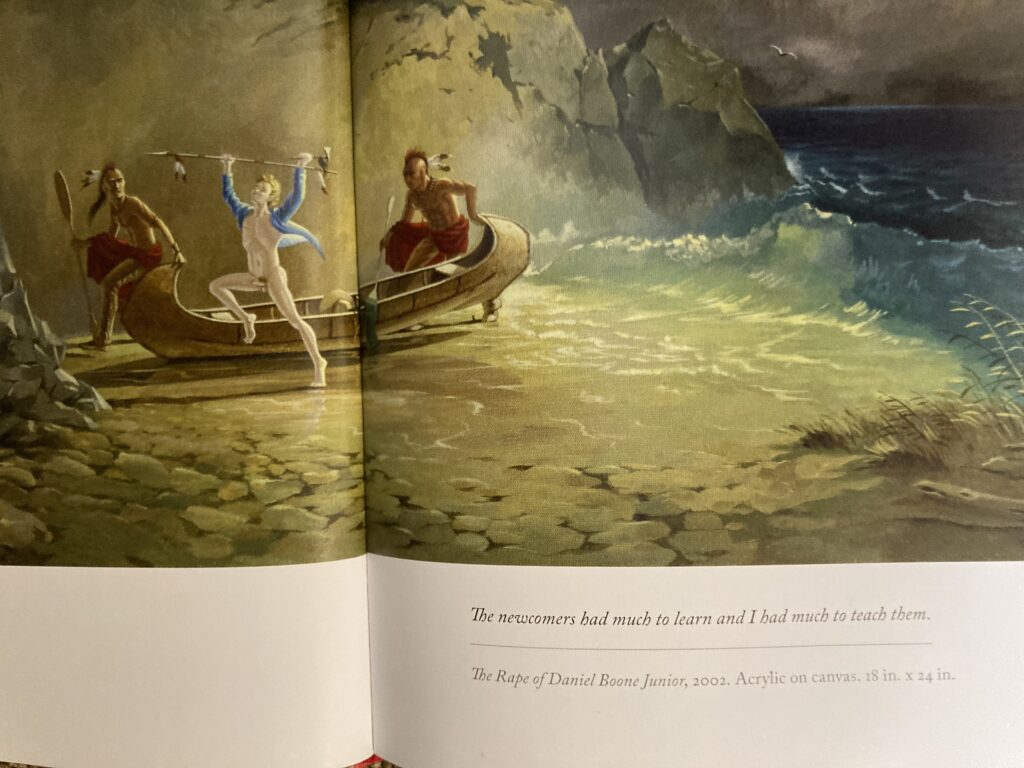
But Monkman goes further than just portraying these sexual acts. The Europeans are depicted as being lost, intrinsically weak and frail, sort of like what is called a “twink” in homosexual culture. They are stripped of the masculine strength that they have traditionally been portrayed as posessing. They are humiliated. Due to Monkman’s preoccupation with not only absolutely humiliating but also dehumanizing only European heroic figures from North America’s colonial history, it is obvious that the revenge dynamic is an insufficient explanation for Monkman’s homosexualization of European colonial figures.
I will explore his purpose in further detail, and come up with a deeper and more accurate explanation for Monkman’s use of graphic homosexual depictions to reveal that Monkman’s Miss Chief Eagle Testickle Vol. 1 is essentially a symbolic humiliation ritual.
The humiliation ritual is a tool of social control that has been used across all societies since ancient times, and has been studied in anthropology and psychology extensively. The primary purpose of a symbolic humiliation ritual is to promote a social order and reinforce social norms. By publicly shaming and humiliating individuals who have deviated from accepted behaviour, the ceremony serves as a powerful deterrent for others, discouraging them from engaging in similar actions. It is well documented that the Nazis used humiliation rituals to marginalize Jewish people.
Additionally, symbolic humiliation rituals function as a form of social control by establishing clear boundaries of acceptable behaviour. They help to define and reinforce the norms and expectations of a particular social group, ensuring conformity and cohesion. They also identify who is in power by portraying who is allowed to invert the old norms.
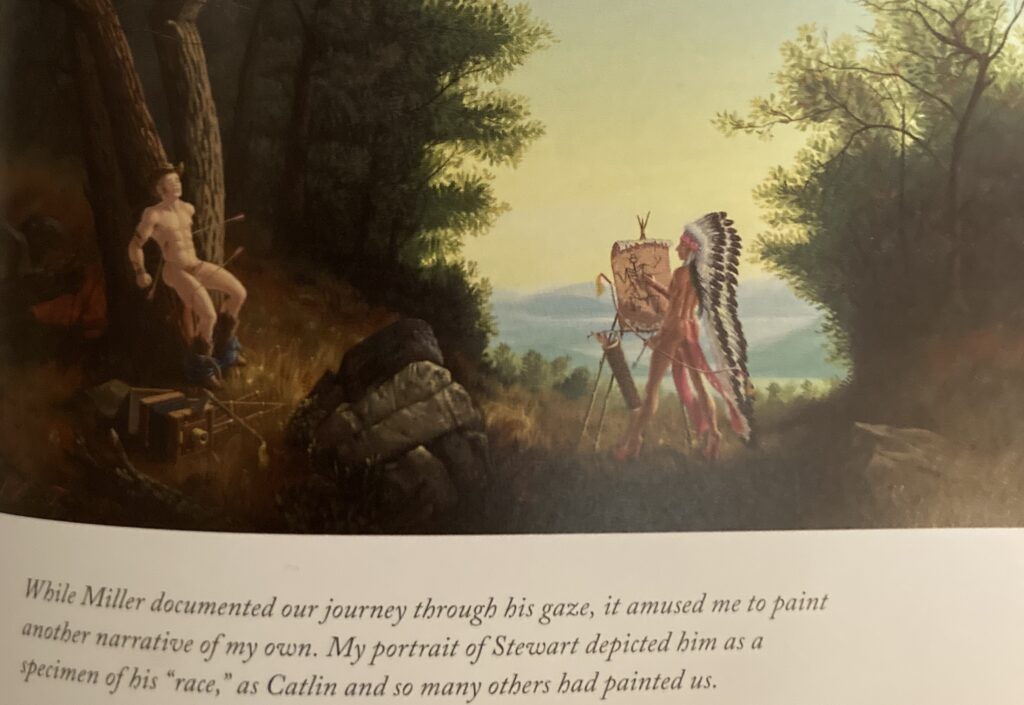
While there have been reviews of Monkman’s work that explain away his shameful treatment of European historical figures as a process of subverting expectations that create cognitive dissonance to allow for new understandings of the Indigenous experience, this does not explain the hateful way that Monkman dehumanizes the Europeans in his book. Daniel Boone and others are described as having “cold lifeless eyes”, while their Indigenous counterparts have eyes “that are brown, with depth and warmth”.
There is an undeniable hatefulness that Monkman demands that you accept as part of his humiliation ritual. You can sense the joy he feels coming off the page when viewing his crude depictions, the joy in knowing he is offending you. This interplay between himself and his audience is part of his brand.
Monkman puts on gallery showings where he sometimes dresses up as his Miss Chief Eagletestickle alter-ego, assuming the role of host. He then taunts his audience with pornographic imagery and descriptions of himself having sexual relations with European pioneer heroes, while also scolding those in attendance for being offended while they look at his painting. The gallery goers thoroughly enjoy the opportunity to feel his authenticity and validate his humiliation ritual through applause and patronage.
A good example of this drive to humiliate is Monkman’s treatment of Daniel Boone, the frontiersman that first explored what is now Kentucky. In Monkman’s book, Daniel Boone is a lost babe in the woods that gets led around by Monkman’s alter-ego, Miss Chief Eagle Testickle, and a couple of other Indigenous men who take turns sexually violating Boone. They care for Boone as a treasured sex toy, until he betrays them, giving away all their information to the colonizers who then take over the land.
“Danny (Daniel Boone) was eager to learn about physical love, So I assisted Pisim and Kistahkisiw in indulging his every curiosity about the mikitay, penis – how it felt to have more than one inside his smooth round bum and hungry wet mouth. He gave himself to us…as we folded him over and over into different positions…” (p. 36)
It should be noted here that Daniel Boone was married to the same woman for most of his life, and had ten children with her. He was a Christian who respected many of the Indigenous people he encountered while he bravely explored the uncharted areas of early America as a hunter, soldier, and pioneer.
Here, Chief Eagle-Testickle describes John A. Macdonald before seducing him into a homosexual affair:
“…I learned that men like him were so simple, blinded by greed; they only saw the world from as far as they could profit. And while his lumpy, large-nosed face was not to my liking, and his sour-milk body odour and alcohol-and vomit- tinged breath quite repulsive, his relationship with the bottle was a weakness I could exploit to help my people.” (p. 183)
Notice how the narration is so mechanical and flat. You know what the words will be before you read them because the prose is so formulaic. The author is so preoccupied with being insulting that they are not paying attention to word flow. The result is predictable and clichéd; almost parodical. The spitefulness just becomes tiring.
These types of scenarios play out repeatedly in Miss Chief EagleTestickle Vol. 1, and are what the book’s narrative actually revolves around. They are a central theme of the book, which is a multi-layered work of art that combines prose narrative with Monkman’s artwork. When a serious artist like Monkman makes something a central theme of his work, it is reasonable to assume there is a purpose to it.
My interpretation is that Miss Chief Eagle Testickle Vol. 1 has a specific message for Canadians and Americans that are descended from the pioneers and explorers of Canada and the USA – particularly, those who are in the upper crust progressive class. He is demanding their submission to a new way of viewing the history of North America – or as he calls it, Turtle Island.
He goes out of his way to completely degrade and feminize North America’s traditional mythological historical figures and dares you to speak out against it. On one page, the narration will graphically describe a European explorer being violated by multiple phalluses in a group sex orgy, and on the opposite page the reader views one of Monkman’s many self-portraits of his alter-ego defiantly staring into the reader’s eyes to let the reader know that he is ready to shout them down if they dare to protest. Monkman wants to let you know that he is powerful, and that he makes the rules now. He dares you to protest, because he knows that if you do, you will be shouted down, labeled a racist, and be shut out of polite society. He knows this because polite society has already submitted to his symbolic humiliation ritual with their praise and awards.
Monkman chooses such extreme sexual depictions to show you how much control his perspective has over the narrative of North American history now. He can take our heroes and absolutely degrade them in the top art galleries of the world and never hear anything but accolades and applause. Monkman forces his audience to validate his humiliation ritual by accusing them of being uncultured or racist if they do not validate the ritual.
As far as this writer knows, this article is the first one ever published that has a negative view of Monkman’s artwork. The only public figure I can think of that takes on Monkman’s ill-treatment of North America’s historical figures at all is Jim McMurtry.
Another recurring theme of Miss Chief Eagle Testickle Vol. 1 is the concept that there are many truths, that truth is relative. Miss Chief doesn’t claim to be telling the real truth – rather, he is telling his audience what truth is acceptable now. One of the main points of the book’s symbolic humiliation ritual is that the participating audience is forced to validate the truth that Kent Monkman wants them to. From reading the book, it is clear that for Monkman’s alter-ego, his truth is that European people are less human than Indigenous peoples and do not belong on Turtle Island, that Canada and the USA are illegitimate states, that most European explorers were secretly gay, that European culture is inherently oppressive, that it must be subdued, and that the only way for Turtle Island to heal is for Indigenous peoples to have full control over it.
My criticisms aside, it is easy to see why Miss Chief Eagle Testickle Vol. 1 is a very powerful book. It is packed with allegory and symbolism that must seem very poignant to progressive-minded readers. It contains a fully developed fantasy world that is built upon real historical events – it even has footnotes, which give the work a sense of historical legitimacy. Essentially, Monkman has created a new mythology for North America wrapped up in a symbolic humiliation ritual.
There are many other themes being dealt with in Miss Chief Eagle Testickle Vol. 1 that are covered by other reviews of his work. None of the reviews prepared me for how spiteful and graphic the book was.
There are lot of books like this one coming out these days. There are not very many books or artworks that celebrate Canada and America’s pioneer heritage being made anymore. Many Canadians don’t find the pioneers interesting anymore, or have become ashamed of their heritage. Books like Miss Chief Eagle Testickle should give Canadians who care about their pioneer history more reason to promote the history of their ancestors and protect their side of the story.
On that note, you can read my article on pioneer historian/journalist Barry Broadfoot here.
All content on this website is copyrighted, and cannot be republished or reproduced without permission.
Share this article!
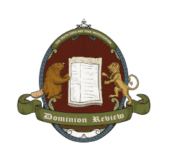
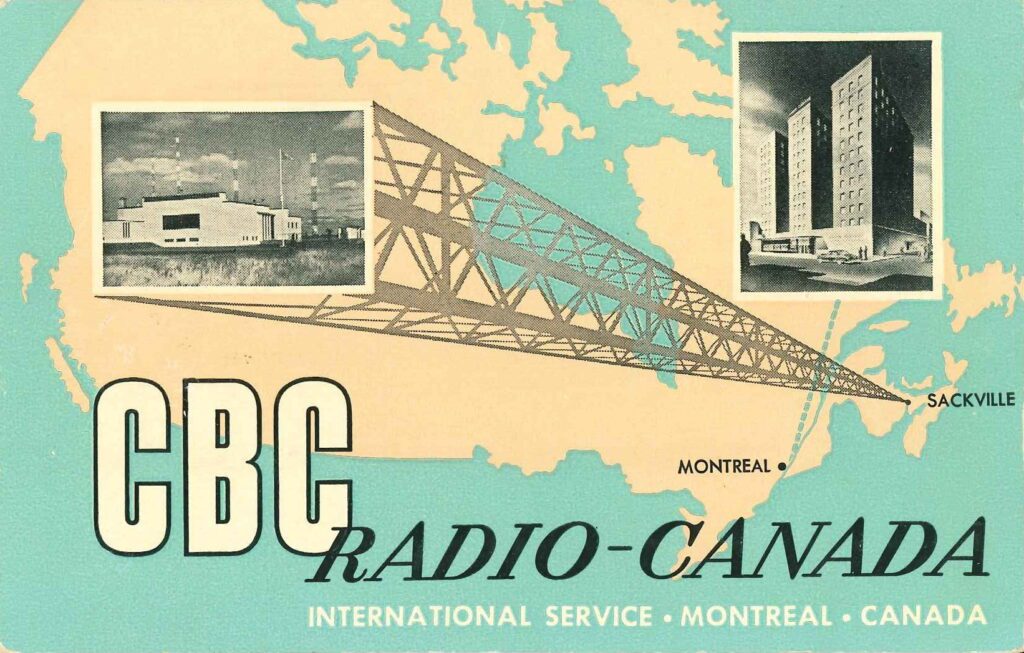

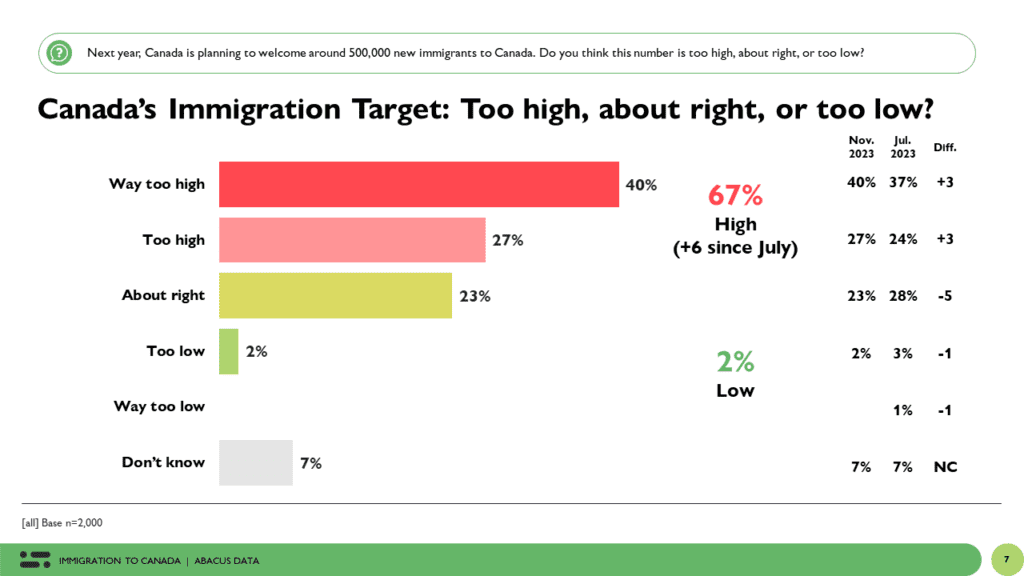
The truth does not fear investigation.
You can help support Dominion Review!
Dominion Review is entirely funded by readers. I am proud to publish hard-hitting columns and in-depth journalism with no paywall, no government grants, and no deference to political correctness and prevailing orthodoxies. If you appreciate this publication and want to help it grow and provide novel and dissenting perspectives to more Canadians, consider subscribing on Patreon for $5/month.
- Riley Donovan, editor